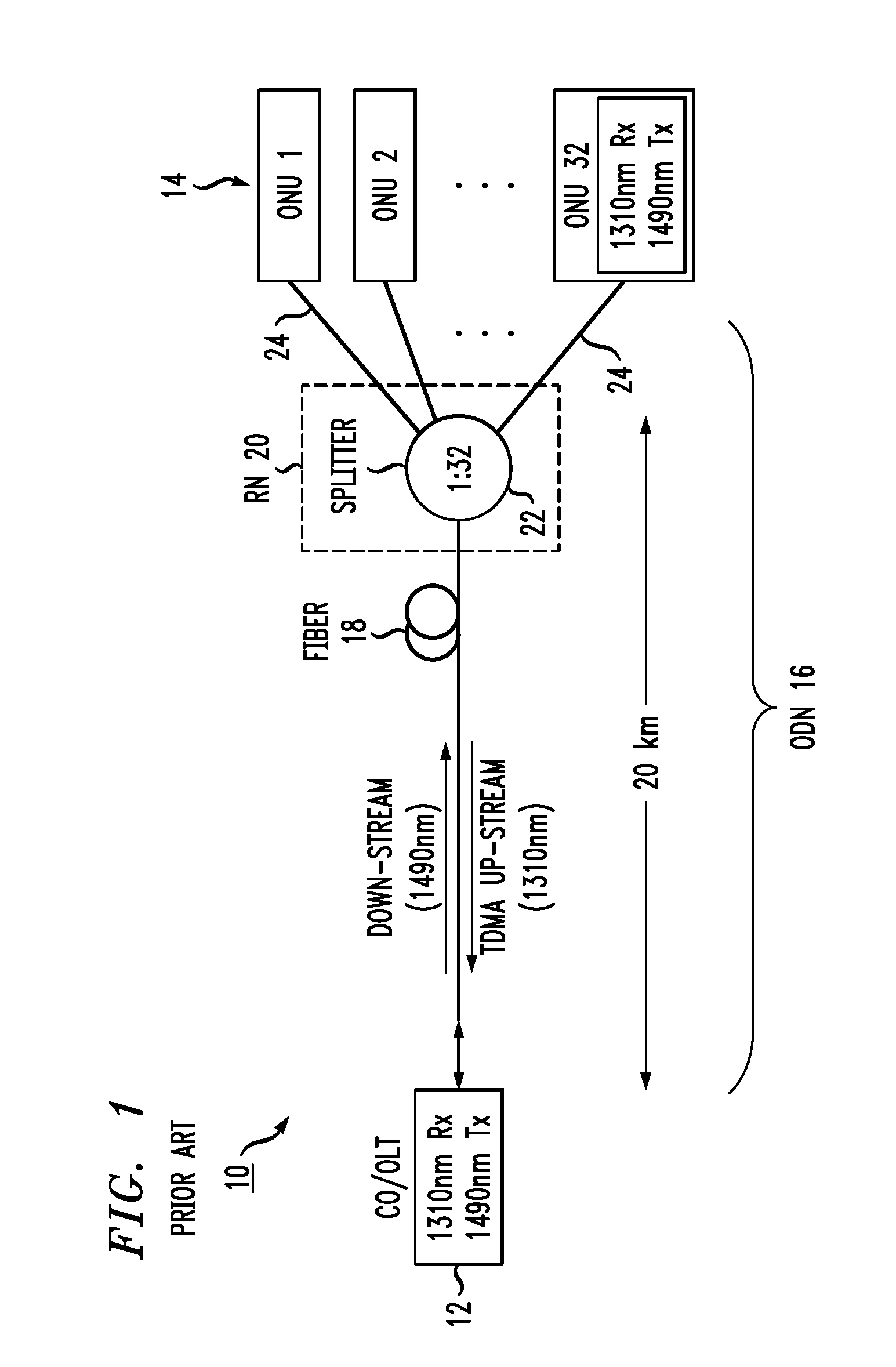Arrangement for deploying co-existing gpon and xgpon optical communication systems
a technology of optical communication system and co-existing gpon, which is applied in the field of systems for deploying a passive optical network, can solve the problems of negating some of the advantages of purely passive systems, limited maximum transmission distance, and split ratio 1:n, and achieves the effect of increasing the reach and split ratio parameters of the overall system communication, and simplifying the components of each onu
- Summary
- Abstract
- Description
- Claims
- Application Information
AI Technical Summary
Benefits of technology
Problems solved by technology
Method used
Image
Examples
Embodiment Construction
[0040]FIG. 3 illustrates an exemplary passive optical network (PON) 100 formed in accordance with the present invention. As with the various prior art arrangements described above, PON 100 includes an OLT, ODN and a number of remotely-located ONUs. In the specific arrangement of FIG. 3, PON 100 includes an OLT 110, an ODN 112 and a plurality of ONUs 114. As will be discussed in detail below, the plurality of ONUs 114 includes a first set of ONUs 114G associated with communications involving a GPON system and a second set of ONUs 114X associated with communications involving an XGPON system.
[0041]As mentioned above, inasmuch as separate ONUs are used for each system (GPON or XGPON), it is possible for the arrangement of the present invention to perform solely as a GPON system, solely as an XGPON system, or as a combination, co-existing GPON / XGPON system, and in each instance provide the desired goals of extended reach and increased split ratio while maintaining a passive network arch...
PUM
 Login to View More
Login to View More Abstract
Description
Claims
Application Information
 Login to View More
Login to View More - R&D
- Intellectual Property
- Life Sciences
- Materials
- Tech Scout
- Unparalleled Data Quality
- Higher Quality Content
- 60% Fewer Hallucinations
Browse by: Latest US Patents, China's latest patents, Technical Efficacy Thesaurus, Application Domain, Technology Topic, Popular Technical Reports.
© 2025 PatSnap. All rights reserved.Legal|Privacy policy|Modern Slavery Act Transparency Statement|Sitemap|About US| Contact US: help@patsnap.com



